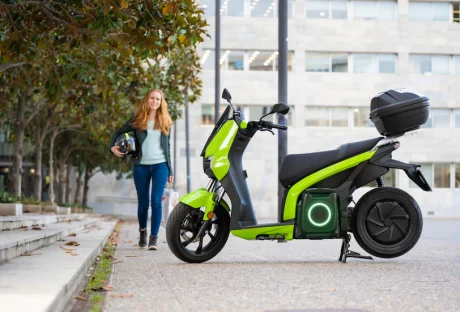The public is understandably skeptical when it comes to the introduction of new technologies. This has been a constant in virtually every innovation since the dawn of civilization. People were skeptical about the railroads when they first became a staple of American life in the 1830s. People were skeptical about aviation when it became a major part of travel in the early part of the 20th century.
The automobile itself was viewed with a healthy dose of scorn and hesitation when it first drove onto the scene. Today, we find ourselves in a similar situation with regard to the emergence of self-driving vehicles. Just like with these other technologies, some of our skepticism is caused by the novelty of the technology and our unfamiliarity with it. However, just as it was with the transportation modes listed above, many of our reservations are well-founded and stem from shortcomings that the technology has yet to overcome.
Still, the bigger question that we find ourselves asking is: Will we be safer in self-driving vehicles than we would be in vehicles that have a human driver?
Human Error Causes Vehicle Crashes
The vast majority of crashes on our roads are caused by human error. Some estimates put this figure at around 90 percent. We experience this firsthand every single day on our roads. Consider how many crashes are caused by reckless driving, distraction, fatigue, and intoxication. In each of these cases, it is a person’s mistake that leads to a vehicle crash.
People are far from perfect, and we make mistakes regularly. When these mistakes occur on our roads, the consequences can be devastating. One mistake made at 55 miles per hour can cause fatalities, serious injuries and incredible amounts of property damage. In that sense, the less we can be subject to lapses in judgment or negligent driving, the safer we will be.
How Do Self-Driving Cars Stack Up Against People?
Thus far, there is not enough information available to make a completely accurate comparison of automated vehicles and human drivers. Think about how many miles people have driven since the launch of the automobile and how many miles have been traveled by self-driving vehicles. This disparity leaves us with an incomplete picture. However, self-driving automobiles have been around long enough for us to get a clearer idea of how safe these vehicles could be and what dangers they could present if manufacturers don’t do their due diligence.
Last year, Google touted the fact that its self-driving vehicles had traveled well over a million miles and been involved in only 17 crashes, all but one of which were found to be caused by another driver’s error. Meanwhile, Tesla, another company that has a big stake in the self-driving automobile industry, has come under fire from critics about its aggressive implementation of automated technology after the death of a driver in Florida in May of 2016. In September, the New York Times reported a similar incident involving a Tesla automobile that occurred in China earlier this year. The criticism from safety advocates is largely over the company’s willingness to make available technology that has not been thoroughly tested. While these were reportedly the first driver deaths in over 130 million miles of travel, it still raises a debate about the degree to which automation will be deemed safe for drivers.
Concerns About Semi-Autonomous Vehicles
Part of the skepticism about automated technology stems from automobiles that will be only partially operated by a vehicle and handed over to a human driver in case of emergency. In certain types of automated vehicles, such as vehicles equipped with Tesla’s Autopilot function, drivers must still be aware enough to take over driving duties in certain situations. This might prove to be a difficult task for drivers, and it could even require a certain level of proficiency or training on the part of a vehicle’s operator.
It should also be noted that we already have some forms of automation in many of our vehicles. Automated braking has been used in vehicles for several years and has likely helped reduce the occurrence of many crashes. There is great promise for more automation, but there are still many unanswered questions.
Accountability Will Always Be a Central Issue
Just as it is in today’s human-operated vehicles, crashes in tomorrow’s self-driving cars will stem from some sort of error. Today, it is usually the drivers who are held accountable for their mistakes, but as self-driving automobiles become a bigger presence on our roads, that accountability will be shifted to other entities. Rather than human error is to blame, it might be the case that a particular crash will be deemed to be the fault of a vehicle manufacturer, or a software manufacturer. For the safety of all drivers, accountability will be a very important issue, one that will need to be fought for and pursued by the institutions providing oversight and regulation, and by drivers and citizens themselves.
The Self-Driving Revolution is Beginning
People might be reluctant to embrace self-driving technology, but it will be thrust upon them whether they are ready for it or not. In Pittsburgh, for example, Uber has launched self-driving vehicles in a pilot program. Uber’s chief rival in the ridesharing world, Lyft, has said that our roads will be filled with automated vehicles in five years, and the company is taking its own steps toward releasing self-driving cars.
Read also: How To Shop For A Car With Your Teen Driver?
Several companies are locked in a fight to be first when it comes to self-driving vehicles. This competition will no doubt lead to the rapid advancement of the technology. As consumers, we have to hope that the release of the technology is not hasty and that road safety is the top priority.
The Future of Our Roads
People are debating when, and not if, self-driving vehicles will become the norm. It’s only a matter of time before more vehicles will be completely or at least mostly operated by automated systems. We know from the history of transportation technology that we can expect certain things. We can expect resistance, adoption, innovation, and missteps in the implementation of the technology. We can also expect that one day soon we will be riding in, or sharing our roads with, self-driving cars.
The Law Offices of James C. DeZao is a personal injury law firm in New Jersey. Contact them by visiting their website or calling them at (973) 808-8900.
Read More:






















